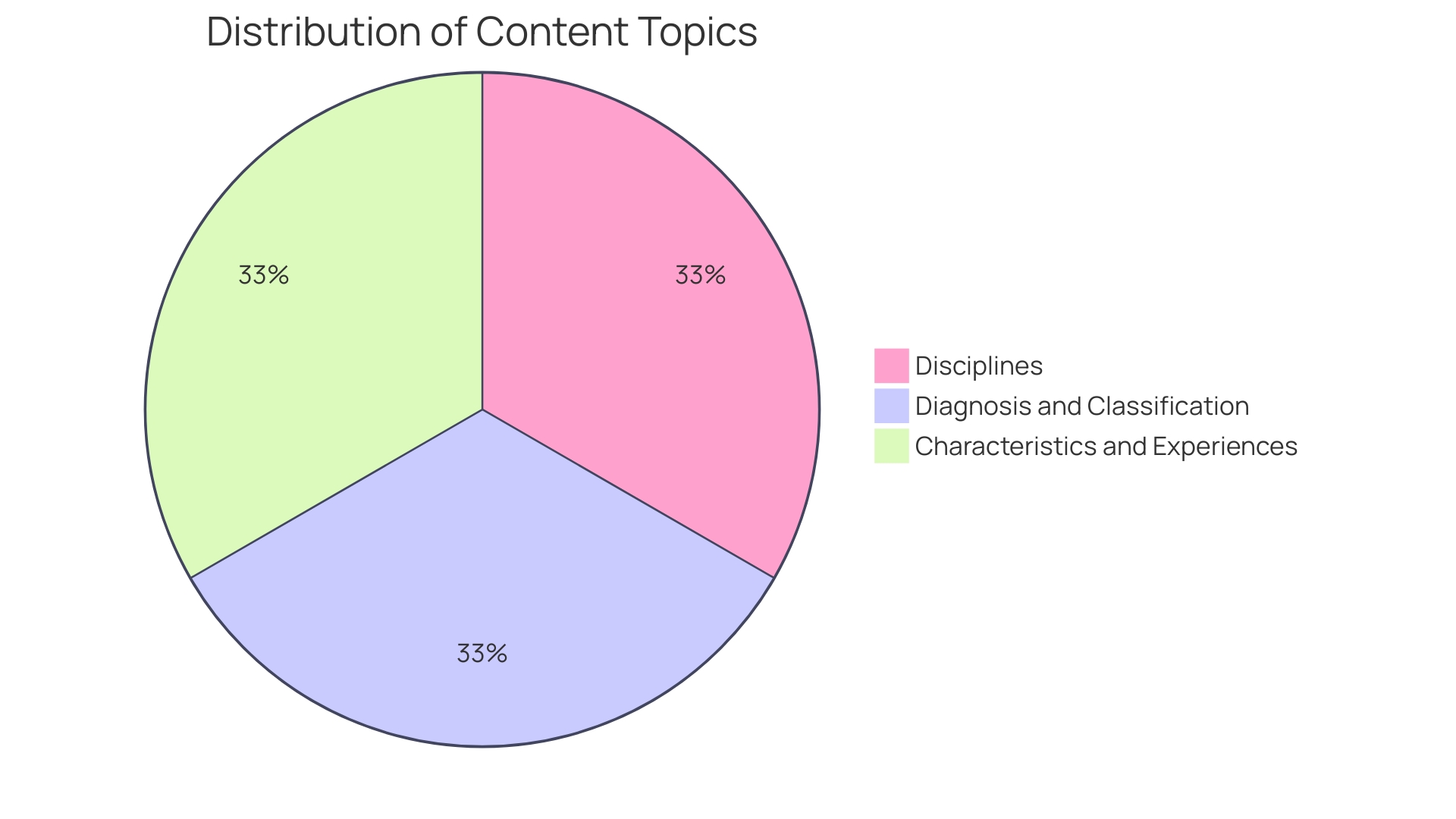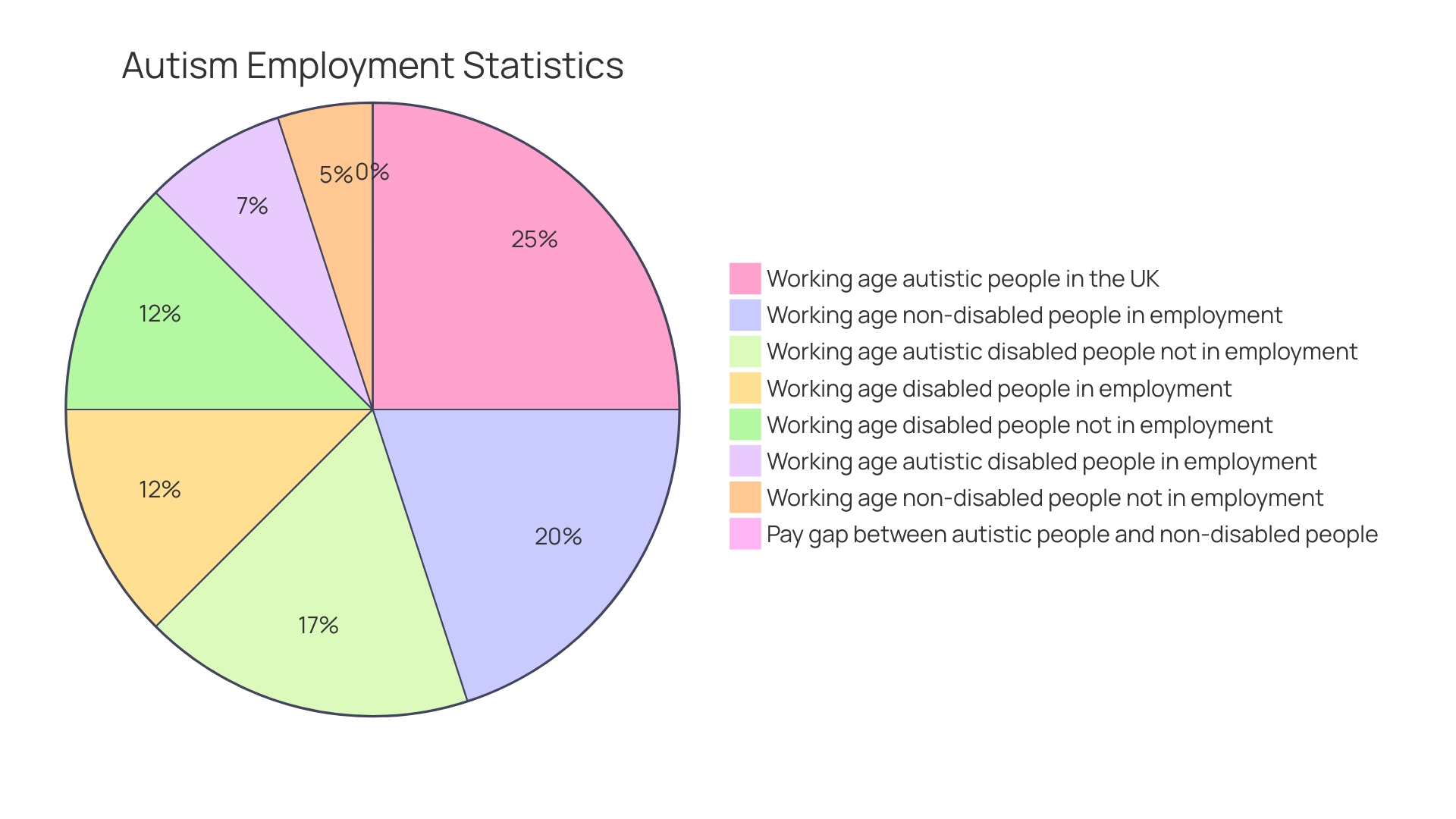Introduction
Autism Spectrum Disorder (ASD) is a complex condition that affects individuals in varying degrees, with each person having their own unique behaviors and communication skills. In exploring the narratives of those with autism, we gain valuable insights into their lives and experiences. Books like Gregory Tino's offer a profound look into the intellectual world of nonverbal autistic individuals, while Stacie Sherman's raw portrayal captures the emotions of being a parent of a child with autism.
These personal accounts serve as a bridge to understanding and empathy, underscoring the importance of recognizing the "superpowers" that often accompany autism. Additionally, non-fiction books on ASD provide valuable information on diagnostics, practical advice, and societal implications. Fictional narratives, such as Joanne Levy's "The Color of Sound," offer diverse perspectives and highlight the strengths of individuals with autism.
Lastly, empowering resources aim to create opportunities for self-advocacy and skill development, fostering inclusive environments where autistic individuals can thrive. By embracing the neurodiversity movement and promoting workplace inclusivity, we can create a society that values and supports all its members.
Books Offering Personal Insights into Autism
Autism Spectrum Disorder (ASD) is a complex neurological and developmental condition that becomes apparent during early childhood, affecting individuals in varying degrees. Each individual with a unique pattern of behavior and level of social and communication skills. It's a spectrum where some may face significant challenges in daily life, while others may have exceptional abilities in areas such as music, mathematics, or art.
Exploring the stories of those with ASD reveals a wealth of insights into their lives. For instance, Gregory Tino's journey as a nonverbal autistic person, detailed in his literary works, offers a profound look at his intellectual world, previously obscured by speech-related challenges. Similarly, Stacie Sherman shares a raw and touching portrayal of her experiences as a parent of a child with a developmental disorder, capturing the nuanced emotions through poetry and letters.
The personal stories in these books act as a connection to comprehension and compassion, offering a glimpse into the lived experiences of individuals with developmental disorders. The stories underscore the importance of recognizing the 'superpowers' that often accompany autism, such as intense focus, meticulous attention to detail, and remarkable problem-solving abilities, which are highly valued in fields like technology.
Furthermore, through studying the writings of authors such as Ellie Middleton, who supports neurodivergent people, we acquire a wider outlook on the difficulties and successes within the neurodiverse community. Her initiative, (Un)masked, and her debut book 'UNMASKED,' provide a platform for those with neurodivergent conditions to be seen and heard in the community and the workplace.
These authors and their stories highlight the significance of a society that pays attention, educates, and adjusts to the diverse needs of the autism community, cultivating an atmosphere where every autistic person can flourish.
Non-Fiction Books That Illuminate the ASD Experience
Exploring the wealth of literature on Autism Spectrum Disorder (ASD) offers invaluable insights into the condition's nuances, from its diagnostics to personal journeys. Recognized diagnostic criteria, such as those from the DSM-5, underscore the importance of parental observations and professional assessments in identifying ASD, a complexity mirrored in the literature. Books in this field not only discuss the scientific underpinnings of ASD and its diverse manifestations but also provide practical advice for those navigating the spectrum.
For instance, readers can find resources that clarify metabolic pathways related to ASD and offer guidance on dietary interventions. These texts demystify complex scientific concepts, making them accessible and actionable for caregivers and professionals alike. They celebrate neurodiversity, with projects like Neurodivergent in STEM amplifying the voices of people with neurodivergences thriving in scientific careers.
Quality non-fiction on ASD also engages with the broader societal implications of the disorder, addressing the global health crisis it represents and the spectrum of challenges faced by those with ASD — from social interaction to restrictive behaviors. With statistics indicating a prevalence of 1 in 160 children globally, these books serve as a critical tool for awareness and understanding.
Moreover, this literature emphasizes the diversity and importance of information, as highlighted during National Non-Fiction November, where books are lauded for their ability to inform, engage, and inspire readers. By offering an array of perspectives — from the deeply scientific to the intimately personal — these books become a cornerstone for those seeking to support individuals with ASD, fostering a world of inclusion and empowerment.

Fictional Narratives Providing Diverse Perspectives on ASD
Literature and media that showcase characters with a neurodevelopmental disorder are pivotal in fostering understanding and empathy. Such stories delve into the emotional and social intricacies of individuals on the spectrum, offering readers a window into the varied experiences of those with autism. These narratives often highlight the unmet needs and the strengths that individuals with a developmental disorder contribute to society, echoing the sentiments of Dr. David (Dan) R. Offord, who emphasized the importance of equitable participation in society for children with disabilities, including those with autism.
The recent book, 'The Color of Sound' by award-winning author Joanne Levy, is a testament to the power of storytelling in this context. It follows Rosie, a young girl with synesthesia, who sees music in vibrant colors. While grappling with her mother's expectations and her own desires for a 'normal' life, Rosie's journey underscores the significance of understanding and supporting the unique experiences of individuals with autism spectrum disorder. This narrative is a 'valentine to families everywhere,' reflecting the complex interplay of family dynamics, personal growth, and the pursuit of one's passions.
Furthermore, the utilization of open science methodologies, as recommended by Burke and Lees (2023) and demonstrated during the pandemic, is crucial in the realm of research on individuals with autism spectrum disorder. By openly and collaboratively sharing knowledge, researchers can enhance the reliability of their findings and better support individuals with autism and their families. Similarly, the role of technology in the lives of autistic youth, as explored in 'Kids Across the Spectrums' by Meryl Alper, demonstrates the need for nuanced understanding rather than oversimplified narratives.
Innovative approaches, such as utilizing role-playing games like Dungeons & Dragons, have shown promise in aiding people with autism spectrum disorder in establishing social connections. As stated in a study published in the journal Autism, such games defy stereotypes about individuals with autism by fostering imagination and teamwork. They offer participants a chance to experience different personas and shared adventures, providing a sense of belonging and confidence.
Essentially, by viewing fictional stories and unique studies, we develop a deeper understanding of the autism spectrum and the various methods in which people explore their environments. These stories and studies not only educate but also spark dialogue and action towards a more inclusive society.
Empowering Resources for Autistic Individuals and Allies
Empowering individuals with autism extends beyond providing support; it's about creating opportunities for self-advocacy and skill development, fostering environments where they can thrive. A testament to this is the initiative at Friends of St. James Park in the UK, which offers a community-based café filled with opportunities for networking, volunteering, and skill-building. These inclusive settings are essential for smoother transitions to new life stages, which can often be challenging due to unfamiliar routines and settings.
In the field of climate action, we witness the remarkable efforts of HPOD's primer, written in a user-friendly style with illustrations by Derek Heard, an artist with autism. This effort highlights the significant, yet often overlooked, contributions of individuals with disabilities to climate adaptation. Whether it's the partnership in Ecuador between FEPAPDEM, Rights Chocolate, and AECADI demonstrating the impactful role of persons with intellectual disabilities in combating climate change, or the innovative approaches to workplace neurodiversity, these stories showcase the potential when all people are included in our efforts to create a sustainable future.
The neurodiversity movement, which started as a concept within online autistic communities, now stands as a powerful voice challenging traditional views of neurological differences. This movement, as highlighted by the American Journal of Bioethics, emphasizes that autism should be seen as a natural brain variation, advocating for accommodating environments rather than viewing it as a disorder needing a cure. This change in viewpoint is crucial for establishing a community that appreciates and backs all its members.
Despite the desire of many individuals with autism to work, statistics reveal that only about 3 in 10 are employed. This calls for a focused effort to improve the employment rate by addressing barriers and fostering workplace inclusivity. It's crucial for society to recognize the diverse talents and perspectives that autistic individuals bring to the table, which can lead to innovative solutions and a more vibrant community.

Conclusion
In conclusion, exploring personal accounts, non-fiction books, and fictional narratives on Autism Spectrum Disorder (ASD) provides valuable insights into the lives and experiences of individuals with autism. These narratives serve as a bridge to understanding and empathy, highlighting the "superpowers" that often accompany autism and the strengths individuals with autism bring to society.
Non-fiction books offer practical advice, diagnostics, and raise awareness about the societal implications of ASD. Fictional narratives, like Joanne Levy's "The Color of Sound," provide diverse perspectives and delve into the emotional and social intricacies of autism, emphasizing the importance of understanding and supporting unique experiences.
Empowering resources aim to create opportunities for self-advocacy and skill development, fostering inclusive environments where individuals with autism can thrive. Initiatives in various fields highlight the contributions of individuals with disabilities, including autism, and challenge traditional views through the neurodiversity movement.
By embracing the neurodiversity movement and promoting workplace inclusivity, we can create a society that values and supports all its members. Recognizing the diverse talents and perspectives of individuals with autism leads to innovation and a more vibrant community.
Through understanding, empathy, and action, we can ensure the well-being and success of individuals with autism, fostering a more inclusive and supportive world for all.




